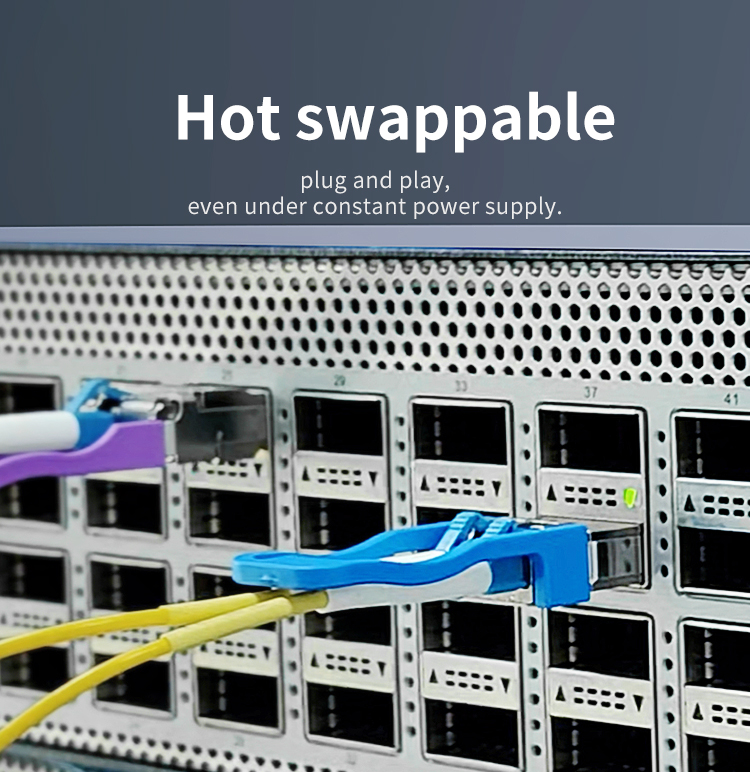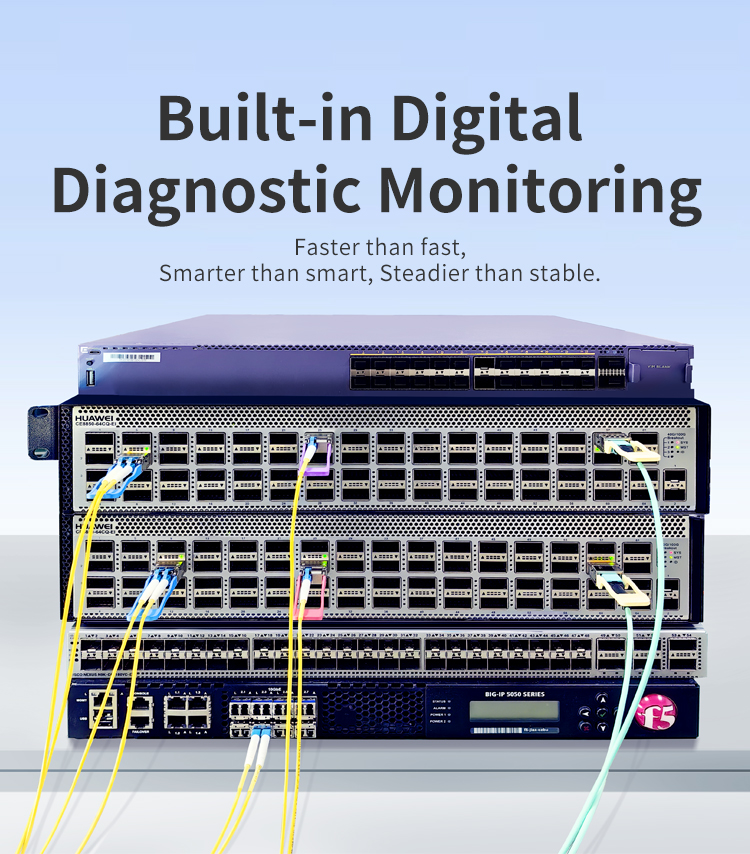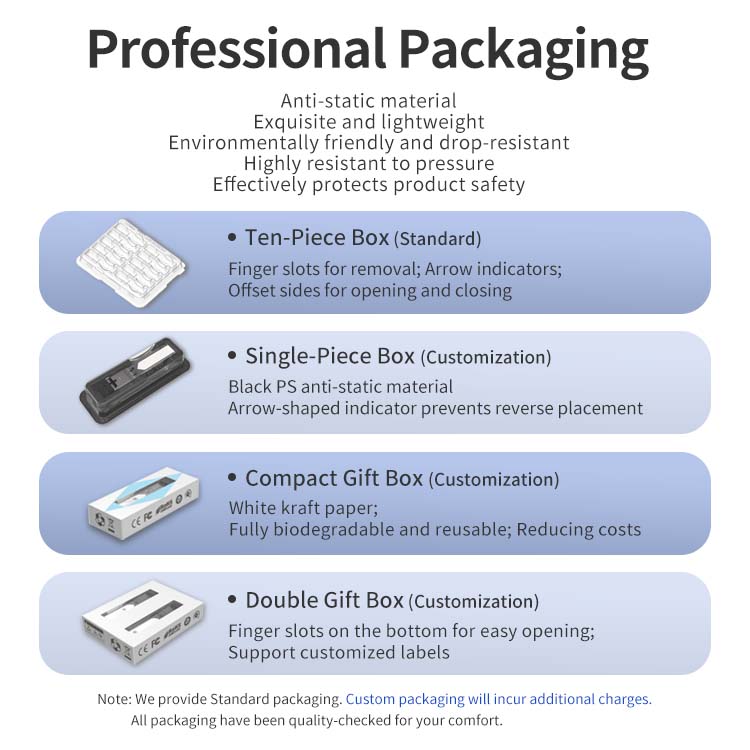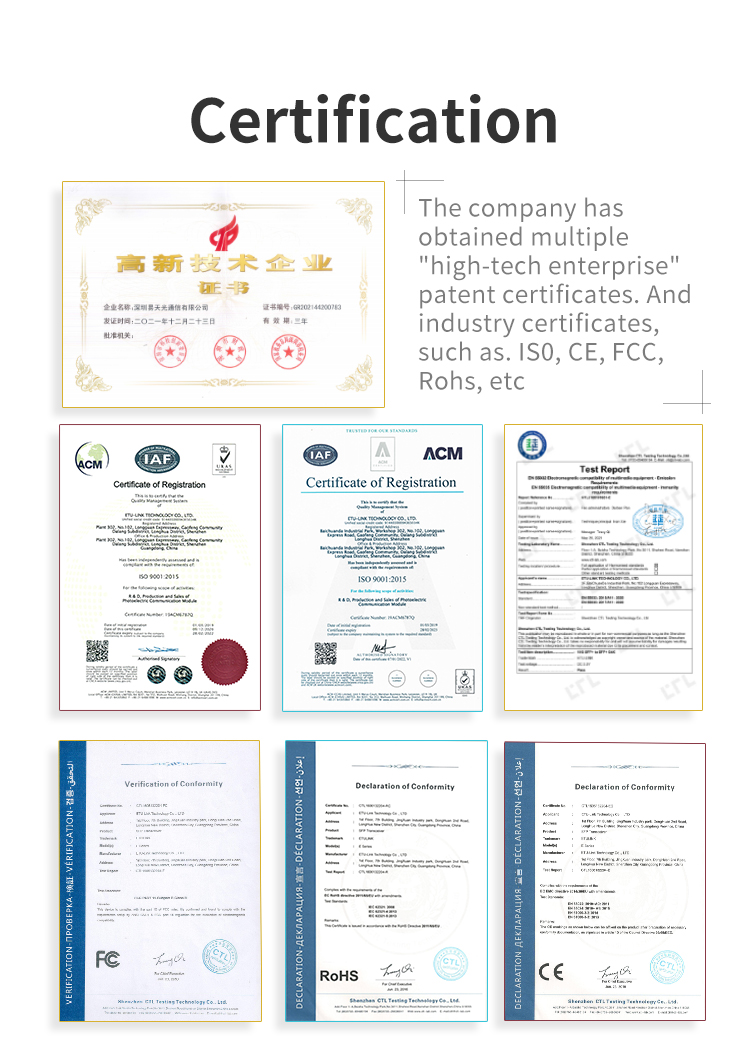
Product Model:
ESP8512-05DData Rate:
1.25GWavelength:
850nmDistance:
550MConnector:
LCFiber Type:
MMDDM:
YESProduct Origin:
ChinaShipping Port:
ShenZhen/hk
Key Features
COM: 0°C ~70°C
COM: 0°C ~70°C
COM: 0°C ~70°C
COM: 0°C ~70°C





SFP LX 10KM
SFP EX 40KM
SFP ZX 80KM
SFP ZX 120KM
SFP ZX 200KM
1.25G
1.25G
1.25G
1.25G
1.25G
10KM
40KM
80KM
120KM
200KM
1310nm
1310nm
1550nm
1550nm
1550nm
LC
LC
LC
LC
LC
SM
SM
SM
SM
SM
DDM
DDM
DDM
DDM
DDM
COM: 0°C ~70°C
EXT: -20°C ~85°C
IND: -40°C ~85°C
EXT: -20°C ~85°C
IND: -40°C ~85°C
EXT: -20°C ~85°C
IND: -40°C ~85°C
EXT: -20°C ~85°C
IND: -40°C ~85°C






Q1: What is a 1.25G SFP transceiver?
A1: 1.25G SFP (Small Form-factor Pluggable) is a compact, hot-swappable optic module supporting 1.25Gbps speeds for fiber or copper networks, commonly used in Gigabit Ethernet and Fiber Channel applications.
Q2: What are the typical applications of 1.25G SFP?
A2: Gigabit Ethernet (1000BASE-SX/LX/ZX)
Fiber Channel (1G/2G/4G)
SDH/SONET networks
Q3: What is the maximum distance for 1.25G SFP LX?
A3: The 1000BASE-LX variant supports up to 10km over single-mode fiber (SMF), while 1000BASE-SX reaches 550m over multimode fiber (MMF).
Q4: What wavelengths do 1.25G SFP modules use?
A4: SX: 850nm (MMF); LX/ZX: 1310nm/1550nm (SMF)
Q5: How does a BIDI SFP differ from a standard SFP?
A5: Standard SFPs require two fibers (one for TX, one for RX), while BIDI SFPs use one fiber with wavelength-division duplexing (WDM).
Q6: How far can a 1.25G SFP ZX module transmit data?
A6: The ZX variant supports extended distances up to 80km over single-mode fiber, ideal for long-haul applications like telecom backbones.
Q7: Are 1.25G SFP modules compatible with industrial temperature ranges?
A7: Yes, many industrial-grade modules operate in extreme temperatures from -40°C to 85°C, ensuring reliability in harsh environments like outdoor networks.
Q8: What is the role of Digital Diagnostics Monitoring (DDM/DOM) in 1.25G SFP?
A8: DDM/DOM provides real-time tracking of parameters like temperature and optical power, enabling proactive maintenance and fault detection for network stability.
Q9: Can 1.25G SFP modules connect to CWDM or DWDM systems?
A9: Yes, specialized CWDM and DWDM variants exist for wavelength division multiplexing, allowing efficient bandwidth usage in metro or data center networks.
Q10: Why choose BIDI over standard SFP for FTTH?
A10: BIDI SFPs halve fiber usage, reducing infrastructure costs in passive optical networks (PON).
If you are interested in our products and want to know more details,please leave a message here,we will reply you as soon as we can.
Categories
© Copyright: 2026 ETU-Link Technology CO ., LTD All Rights Reserved.

IPv6 network supported
Friendly Links:
易天官网